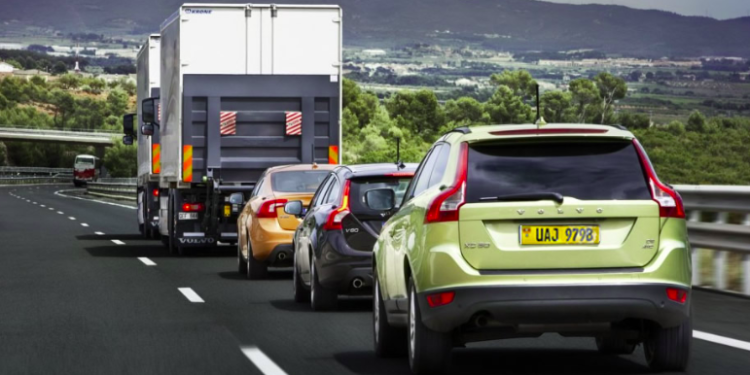Driving through Rwanda’s picturesque yet challenging mountainous roads requires skill, preparation, and caution. Whether you are a local driver or a tourist exploring the country’s scenic routes, ensuring your car is equipped for these conditions is crucial. Here are essential car safety tips to help you navigate Rwanda’s hilly terrain safely and confidently.
1. Conduct a Thorough Vehicle Inspection
Before setting out on Rwanda’s winding roads, inspect your car to ensure it’s in optimal condition. Key components to check include:
- Brakes: Test your brake system to ensure it responds effectively. On steep descents, your brakes will endure added pressure. If your brake pads are worn out or if you notice a spongy feeling when you press the pedal, consider replacing them immediately.
- Tires: Ensure your tires are properly inflated and have sufficient tread depth to provide grip on steep inclines and slippery surfaces. Uneven tread wear could indicate alignment issues that need to be addressed.
- Lights and Indicators: Given the frequent fog in mountainous regions, ensure headlights, brake lights, and turn signals are fully functional. Clean your headlights regularly to enhance visibility in low-light conditions.
- Engine and Coolant: Steep climbs can cause your engine to overheat. Confirm your coolant level is adequate, and inspect the radiator for leaks. It’s also wise to carry extra coolant in case of emergencies.
- Battery Check: Cold weather in higher altitudes can strain your battery. Ensure the terminals are clean, secure, and corrosion-free to avoid starting issues.
2. Master Safe Driving Techniques
Rwanda’s mountain roads often include sharp curves, steep ascents, and narrow paths. Employ these driving tips for added safety:
- Use Lower Gears: When ascending or descending steep slopes, lower gears provide better control and reduce brake strain. In manual vehicles, downshifting allows for improved engine braking on declines.
- Control Your Speed: Maintain a moderate speed to allow better reaction time on blind corners. Excessive speed on curvy mountain roads can lead to accidents, especially in foggy or wet conditions.
- Avoid Overtaking on Bends: Visibility is often reduced on mountain roads, making overtaking risky. If you must pass, ensure the road ahead is clear and use your horn to alert oncoming vehicles.
- Stay in Your Lane: On narrow roads, avoid cutting corners. Stay within your lane to prevent head-on collisions, especially on blind curves.
3. Pack Essential Emergency Gear
Unexpected situations can occur in mountainous regions. Carry these essentials to stay prepared:
- Spare tire, jack, and wheel spanner
- First aid kit with essential medications
- Reflective triangle and warning lights
- Drinking water and snacks in case of delays
- Warm clothing or blankets in case of sudden weather changes
- Fully charged phone with emergency contacts saved
- A portable battery charger or power bank
4. Prepare for Changing Weather Conditions
Rwanda’s high-altitude areas frequently experience sudden weather shifts, including fog and heavy rain. To stay safe:
- Use Fog Lights: These improve visibility during misty conditions. Avoid using high beams in fog, as they can reflect light and reduce visibility.
- Windshield Wipers: Ensure wipers are functional to handle sudden downpours. Consider applying a rain-repellent solution to improve windshield visibility.
- Maintain Safe Distances: Wet roads can increase stopping distances. Allow extra space between you and the vehicle ahead to give yourself more reaction time.
5. Choose the Right Vehicle for Mountain Driving
Driving in Rwanda’s hilly regions demands a vehicle equipped for the challenge. SUVs and 4x4s are ideal for their powerful engines, enhanced traction, and higher ground clearance. Vehicles like the Toyota Land Cruiser, Nissan Patrol, or Mitsubishi Pajero are popular choices for tackling Rwanda’s mountainous terrain. To find second-hand cars suitable for these conditions, check out auto24.rw, where you can find a variety of vehicles designed to handle challenging landscapes.
6. Plan Your Route and Fuel Stops
Mountainous routes may have limited service stations. Plan your trip by:
- Mapping your route in advance using navigation apps
- Identifying fuel stations along the way to avoid running out of gas
- Ensuring your tank is full before setting out, especially in remote regions
Consider checking for local road updates and weather forecasts before starting your journey to avoid unexpected delays or closures.
7. Be Aware of Local Driving Practices
In Rwanda’s mountainous regions, local drivers may have unique driving habits. Keep these points in mind:
- Watch for Cyclists and Pedestrians: Mountain roads often serve as main routes for locals walking or cycling. Remain vigilant, especially around bends.
- Yield to Larger Vehicles: On narrow uphill sections, larger vehicles like buses and trucks may require additional space. Be prepared to yield where appropriate.
- Horn Usage: In Rwanda, it’s common practice to use your horn to signal your presence on blind corners or winding roads. This helps alert oncoming traffic.
8. Stay Calm and Focused
Mountain driving demands heightened concentration. Minimize distractions by avoiding phone use while driving. If you feel fatigued, take breaks at designated rest points. Keeping a calm and focused mindset will help you react effectively to unexpected challenges.
By following these essential tips, you can confidently explore Rwanda’s stunning yet challenging mountainous roads. Safe driving starts with preparation, so take the time to ready your vehicle and plan your journey wisely.
For additional insights on Rwanda’s driving conditions and car care, visit automag.rw, a trusted platform for Rwandan automotive enthusiasts.





